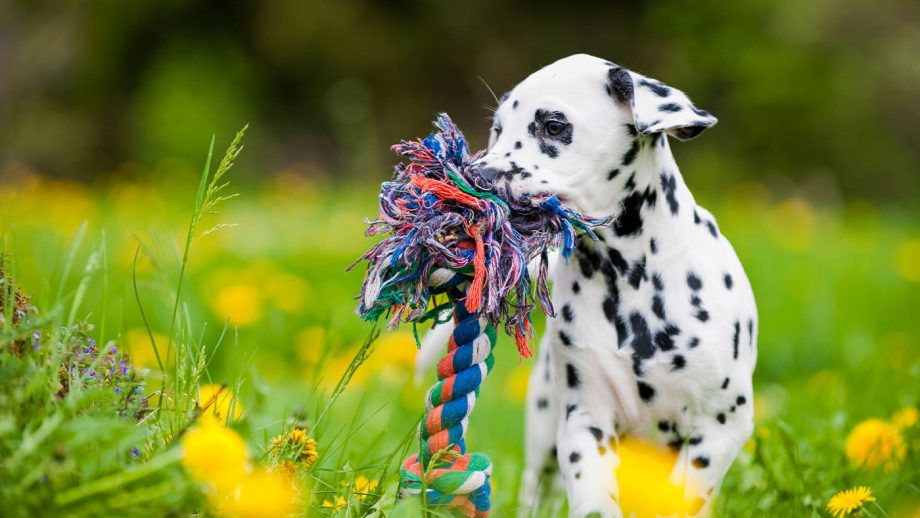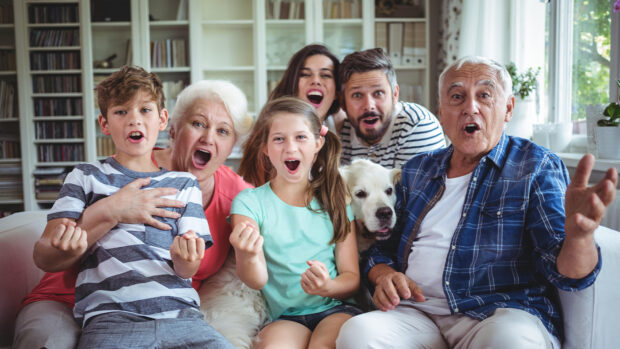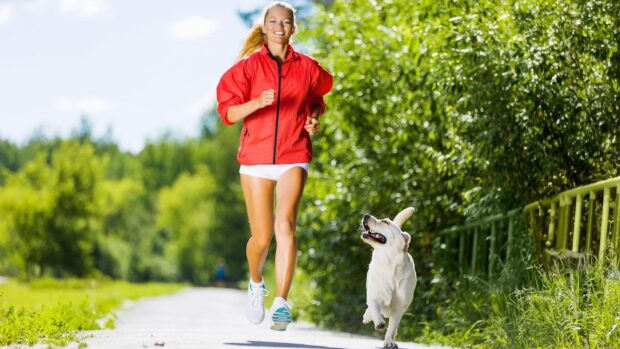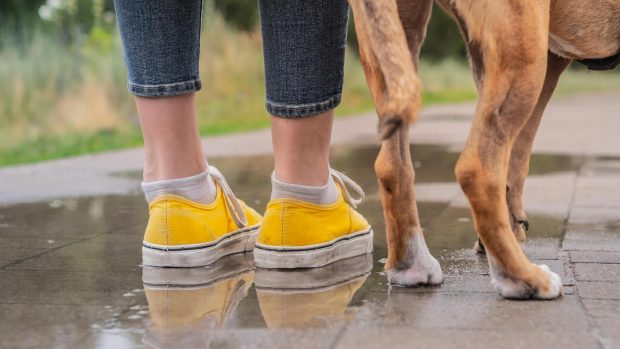Puppies are bundles of energy – and cute ones at that – but it’s important to know why puppies get overexcited, what triggers these outbursts and how to calm a puppy down to make sure their behaviour is manageable, similar to knowing how to help an anxious dog. Understanding the psychology behind the behaviour will go a long way to enabling you to deal with the behaviour and bring them out of the hyper-aroused/vigilant/alert stage more quickly.
First and foremost, you need to understand that you are your dog’s best friend and whole world. Once you bring him home, whether it’s as a puppy or an older re-homed or rescue dog, and the bond between you is established, being excited is his way of communicating his pleasure at your presence – whether that’s you coming downstairs in the morning or walking through the door after work. For your dog, it’s like falling in love all over again with you and they only way they can express this is by showing you – sometimes in unacceptable ways and vocalising – to release that “I’m so pleased to see you” energy. Remember they cannot communicate in speech like humans or rationalise the same way.
Signs of over excitement in puppies
- Barking
- Wagging tail
- Hugging
- Stomach flip
- Wiggling
- Tongue hanging
- Play bowing
- Zoomies or running around the house
- No impulse control
- Peeing uncontrollably when the stimuli is in front of them – this is usually a problem that resolves as they mature, or they are exhibiting submissive urination, which typically happens when a dog feels shy, anxious or scared, or is recognising another dog’s hierarchy
What causes puppies to get over-excited?
Overstimulation
Puppies can get overexcited when there is a lot going on around them. Play parks are a prime example of this, particularly if there are a lot of small children running about and screaming or laughing. This is like being back with their litter siblings and they are desperate to join in.
Stress
Some puppies get overexcited when they are stressed – and this one is a hard one for a dog parent to grasp. It doesn’t seem logical that if your dog is stressed, that it be running about like a lunatic, chasing its tail, jumping up, nipping or panting like crazy, usually accompanied with whale eye (dilated pupils) and an inability to concentrate. All of these are displacement behaviours and your dog’s way of coping with the situation and releasing the feelings.
Your behaviour
Your behaviour can be a factor in your puppy’s overexcitement. Usually by bending down when the dog is exhibiting the excited behaviour and talking excitedly to your dog while giving direct eye contact. Not only are you adding to the behaviour, but you are also affirming it.
Excess energy
Excess energy can lead to hyperactive behaviour or overexcitement. The usual culprit is a processed diet (kibble) and lots of coloured treats (as opposed to natural dog treats), combined with a lack of environmental enrichment and exercise. There is so much contradicting information out there, that it can be difficult for dog owners to know if they are doing the right thing. For example, you’ve probably heard that you can only walk a puppy for five minutes for every month of their age. Try telling that to a husky or a working cocker spaniel on the wrong diet when it’s bouncing off your walls and destroying everything in sight.
I tend to use common sense when exercising young dogs – if you can exercise them on the lead and in a controlled way, while doing a bit of training and enrichment games, then they are less likely to hurt themselves jumping up or on and off furniture while zooming around to release the excess energy. I own large breeds and they grow exceptionally quickly and, although you have to be careful with their joints and growth plates, in 20 years of owning and breeding them, none have had any joint issues. I won’t let them climb stairs or jump in and out of cars or on sofas while growing, but I do walk them longer than five minutes per month of age and I do so on a flat surface, on a lead in a controlled way.
Conditioned behaviour
Your puppy’s overexcitement can be trained. For example, if every time you come home, your dog launches itself at you and you fuss it and entertain it, this is affirmation to your dog that this is a desirable behaviour. In the same way, you can tease your dog into overexcited behaviour by squeezing a ball and not letting them get it or blowing in their face – all this provokes a response in your dog. You may also laugh while looking directly at your dog, which your dog will see as as affirmation and think this behaviour is making you happy. However, the problems start to arise when your puppy is no longer a tiny ball of fluff but a six-month-old 50kg giant. It’s not so hilarious then, but it’s your own fault for teaching it.
How to calm a puppy down
The best way to calm a puppy down is to instil the correct behaviours from the beginning, but it’s never too late to start. If a puppy is nipping or mouthing, it’s good to have something to hand that you can put in his mouth. I would suggest carrying something your dog likes, such as a ball or one of the best dog toys, when you’re out, and have the same items to hand when you walk in the door before greeting your dog.
Avoid giving direct eye contact until they are calm. If they are jumping up, give the “off” command but still avoid eye contact, and continue walking through them to where you want to be as if they weren’t there. Only give your dog eye contact when the behaviour stops along with the “yes” command for affirmation and a reward, which could be a stroke and a fuss, a treat or both.
Sometimes, in very young dogs you cannot redirect to work mode (such as setting them a “find it” task) until you get the calmer behaviour. Their lack of impulse control would make it almost impossible to respond to basic commands such as “sit”, which most people use, and this can actually be a trigger in itself.
Make sure you are not exacerbating the behaviour by engaging them when jumping and biting. Be consistent – always greet your dog in the same low-key way. If your dog jumps up and you greet it with enthusiasm then you have taught the dog this is acceptable behaviour, and he will do it to everyone he encounters – even more so when you use an excited voice. Consider how many times you’ve seen or met people on a walk who’ve said, “oh wow, look at your puppy its so cute, can I stroke it?” and they then talk in a ridiculous voice (we’ve all done it, too) and the puppy then jumps all over the walker. This is because it has learnt this from you as acceptable. I start teaching meet and greets in my puppy class from the outset, while showing owners the correct body language and methods to help teach the dog the right way.
If all of this fails, and your dog is approaching six months, has never had any training and is still snarling snapping biting and jumping uncontrollably, do not wait any longer and get in a reputable behaviourist before the behaviour escalates more going into the teenage phase and next fear period.
You might also be interested in:

Best puppy toys to soothe teething pain or anxiety, and for playtime

Train your puppy with tasty treats to entice and reward

No stress: the best dog calming treats

Soothe anxiety with the best calming supplements for dogs

Canine calming products to keep your dog cool, calm and collected

The best calming pet beds for anxious dogs and super snoozing

Subscribe to Horse & Hound magazine today – and enjoy unlimited website access all year round
Horse & Hound magazine, out every Thursday, is packed with all the latest news and reports, as well as interviews, specials, nostalgia, vet and training advice. Find how you can enjoy the magazine delivered to your door every week, plus options to upgrade your subscription to access our online service that brings you breaking news and reports as well as other benefits.




